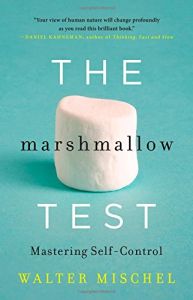Join getAbstract to access the summary!

Join getAbstract to access the summary!
Walter Mischel
The Marshmallow Test
Mastering Self-Control
Little, Brown US, 2014
What's inside?
What if a simple test predicted how well a child will advance…but it demands saying no to a marshmallow?
Recommendation
Cognition researcher Walter Mischel offers a useful, accessible report to give readers a greater understanding of the role of self-control and how it relates to crucial mental attributes. He starts by describing the “Marshmallow Test,” which challenges small children to try to wait before eating a single marshmallow long enough to earn a second marshmallow. He integrates other authorities’ scientific studies on self-control, links the data to solving real-world problems and explains how individual Marshmallow Test results predicted kids’ future success. He also gives you a greater understanding of the role of self-control and how it relates to crucial mental attributes and to control of harmful habits. His book will please those who want to help kids succeed, to learn how the mind functions or to improve their self-control.
Summary
About the Author
The co-author of Introduction to Personality, Walter Mischel is a professor of humane letters in psychology at Columbia University. He has written more than 200 scientific papers.
















Comment on this summary